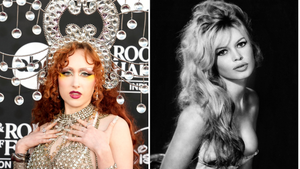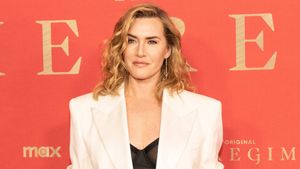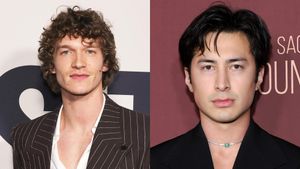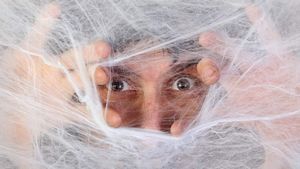Racial diversity of LGBTQ+ characters on television is up, but LGBTQ+ representation overall is down slightly, according to the latest edition of GLAAD’s annual “Where We Are on TV” report, released Tuesday.
“Where We Are on TV” assesses and analyzes the number of LGBTQ+ regular and recurring characters on scripted series on prime-time broadcast and cable as well as eight major streaming platforms. This year’s report covers shows that premiered or are expected to return between June 1, 2022, and May 31, 2023. This marks the 27th year that GLAAD has tracked the presence of LGBTQ+ characters on television and the 18th edition of the “Where We Are on TV” report.
This year, GLAAD counted 596 regular and recurring LGBTQ+ characters across broadcast, cable, and streaming, a decrease of 6.4 percent from the previous year’s 637 LGBTQ+ characters. There were 101 LGBTQ+ characters on broadcast, 139 on cable, and 356 on the streaming services Apple TV+, Amazon Prime, Disney+, HBO Max, Hulu, Netflix, Peacock, and Paramount+.
“We have seen with shows like The Last of Us, Stranger Things, The Umbrella Academy, and more, that when networks and streamers put their full brand influence into LGBTQ-inclusive shows, our stories are successful critically and commercially,” GLAAD President and CEO Sarah Kate Ellis said in a press release. “As the media landscape continues to grow and change, it is imperative that these companies stand behind the excellent LGBTQ storytelling their creative teams are telling, so these series are able to more deeply explore the lives and stories of characters audiences have come to love. With attacks on the LGBTQ community in political and news spaces, Hollywood has more influence than ever and it’s critical the stories they invest in telling include fair and accurate depictions of LGBTQ people that reflect the humanity of our community.”
GLAAD continues to call for higher representation of LGBTQ+ people of color across television to reflect the true demographics of the community. This year, racial diversity is up on cable and streaming, with at least 50 percent of LGBTQ+ characters on each platform being people of color.
For the past four years, over 50 percent of LGBTQ+ characters on broadcast have been people of color, but this year that is down slightly to 48 percent. For the first time in this report’s history, streaming features a majority of LGBTQ+ people of color (53 percent of all LGBTQ+ characters across the platforms tracked). In total, 51 percent (304) of the 596 LGBTQ+ characters are people of color.
There were 32 transgender characters, a decrease of 10 from last year. (Several trans-inclusive series will take an extended break between seasons and will return in future reports but are not counted in this study’s research period.) Of those 32 transgender characters, 16 are trans women, 11 are trans men, and five are nonbinary.
“At a time when transgender Americans are facing a growing number of dangerous and discriminatory attacks in rhetoric and policy, Hollywood players who are real allies to our community have a responsibility and an opportunity to create stories that humanize trans people and educate viewers about being transgender,” Ellis said in the release.
This year’s report counted eight LGBTQ+ characters living with HIV. That is an increase from last year’s study, but none of these characters will return. Six were on the anthology series American Horror Story: NYC, and the remaining two were on the canceled series The Midnight Club and Queer as Folk. GLAAD’s most recent “State of HIV Stigma” study found that only 31 percent of adults have seen stories about people with HIV in the media. With approximately 1.2 million Americans living with HIV, GLAAD continues to call for diverse stories of people living with HIV.
Among other findings: Bisexual characters made up 25 percent of LGBTQ+ characters, down from 29 percent last year. But in the real world, 58 percent of LGBTQ+ people identify as bisexual, according to a Gallup poll. Fifty-two percent of all LGBTQ+ characters were women. There were eight asexual characters, up from two in the previous year. There were 27 LGBTQ+ characters with a disability.
“It’s exciting to see significant progress made in racial diversity of LGBTQ characters as well as growth in storytelling for kids and families,” Megan Townsend, GLAAD’s senior director of entertainment research and analysis, said in the release. “However, we still find that LGBTQ inclusion is not evenly prioritized across all networks or platforms, as the top three inclusive cable networks represent nearly half of LGBTQ programming on the platform and more than half of LGBTQ characters on streaming are on just one service.”
Townsend added, “While newer streamers continue to build their programming and networks are looking to connect with audiences who are faced with more and more choices, it’s clear that well-crafted LGBTQ-inclusive series with full support behind them at all levels can break through a crowded landscape and become ‘must-watch’ successful shows for critics and audiences alike, such as Yellowjackets, Hacks, The Umbrella Academy, The Last of Us, and more have proven. We hope to see more networks and streamers follow these examples by investing in and proactively marketing nuanced, diverse LGBTQ stories.”




































































Charlie Kirk DID say stoning gay people was the 'perfect law' — and these other heinous quotes